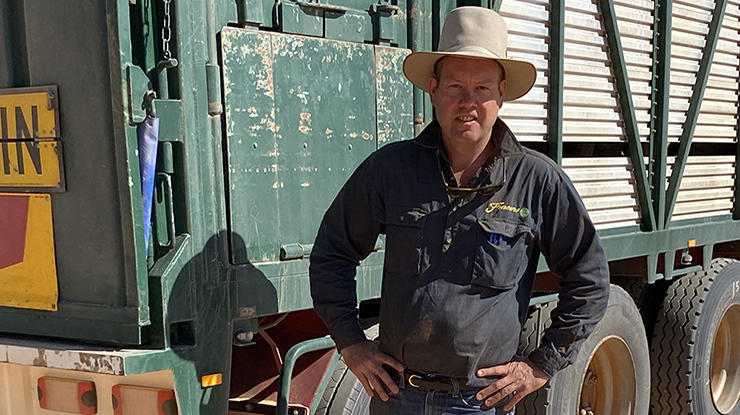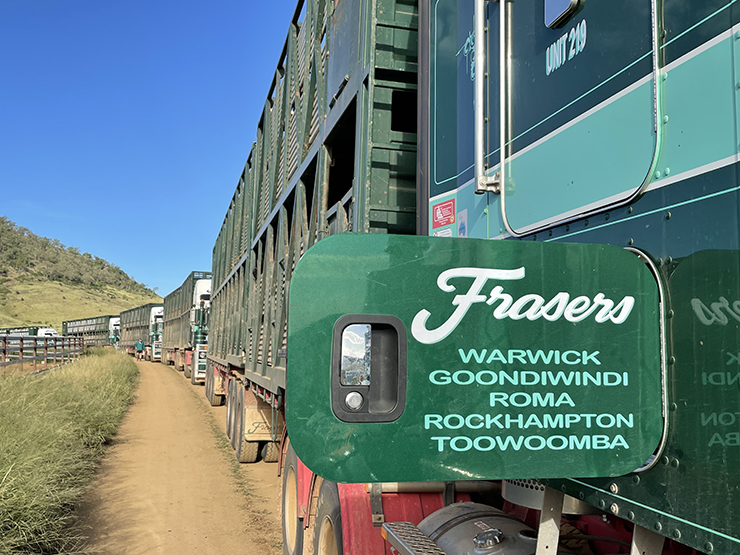Transport hub ‘one-stop-shop’ for livestock transport info
08 March 2024
 Transport hub collaborating partner, Athol Carter.
Transport hub collaborating partner, Athol Carter.
Livestock transporter Athol Carter – who was a collaborating partner in the Transport hub’s development – said the new central resource will support everyone in the supply chain to better understand their responsibilities and learn about the practical measures they can take to meet industry and community expectations.
Athol has worn many hats in the livestock transport industry since he first got behind the wheel as a driver 25 years ago. Today, he’s Regional Manager for Frasers Livestock Transport in Central Queensland, as well as Vice Chair of TruckSafe and Vice President of the Australian Livestock and Rural Transporters Association.
He said continual change is a hallmark of Australia’s livestock transport industry and it’s critical for producers to stay up-to-date with the latest industry trends and requirements.
“In recent years, we’ve seen some big shifts. Whether it’s the increased focus on consumer expectations with people wanting certainty about where their meat is coming from and how it’s been treated, or the rise in natural disasters that are disrupting our road networks more often and for longer periods,” he said.
While the industry is already handling these changes well, Athol sees a real opportunity to bridge knowledge gaps by centralising the highest quality information and advice in one place.
“Many of the challenges in the transport industry have to be addressed collaboratively across the supply chain. The Transport hub is going to be especially valuable in helping producers understand how they can work with transporters and the rest of the supply chain to achieve best practice,” he said.
The hub includes new and existing resources to help producers identify best practice in dispatching and receiving stock, including the latest industry trends, hands on practical advice and scientific research.
On the road together

The wellbeing of drivers and livestock is paramount for Frasers Livestock Transport.
With more than six decades’ experience in livestock transport, Ross Fraser is an industry veteran. Together with his brother and nephew, he’s a Director of Frasers Livestock Transport, which was started by his parents in 1944 and is now the largest privately owned livestock transport operator in Australia.
Throughout his career, Ross has seen incredible changes across the industry, citing the ability to transport livestock over much longer distances in much shorter times as the most significant. As the distances have increased, so too has the focus on the wellbeing of both livestock and drivers.
“As an industry, we’ve always paid attention to the welfare of the animals, but that’s been taken to a new level over the past 20 or 30 years,” Ross said.
“It’s improved not just through advances in technology and equipment, but also by helping producers understand the importance of good preparation for livestock transport.
“It’s important to understand that good livestock transport doesn’t start and end with the driver – everyone in the chain has a role to play in ensuring best practice.”
Preparation is key
One of the features of the Transport hub is guidance on preparing animals for transport.
“Producers should make sure their animals are not just market-ready, but that they are fit-to-load,” Ross said.
“Plan ahead so you aren’t running animals straight from the paddock into the yard as the truck arrives – that isn’t good practice for the animals, the transporter or the receiver.”
If livestock are travelling long distances, it’s critical they’re properly prepared in advance of loading.
“This ensures the animals are ‘fit and strong’ for the trip and can manage the intended journey well. It also improves animal welfare, minimises environmental risks for the transporters and significantly improves food safety at processing.”
He also encouraged producers to recognise drivers’ experience when it comes to determining key factors, such as appropriate loading densities.
“Loading density is critical to ensuring animals reach their destination in proper condition – it has to be spot on to ensure not only the animals’ welfare but the safety and stability of the vehicle,” Ross said.
“There are so many variables that affect that decision – such as animal weight and condition – and this is one of the key areas where driver experience and knowledge really come to the fore.”


